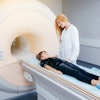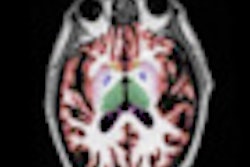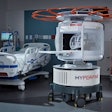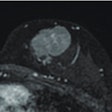A new study published in the November issue of the American Journal of Roentgenology has confirmed that referring physicians who have a financial interest in medical imaging have higher utilization rates -- as much as 49% more. Furthermore, the Deficit Reduction Act of 2005, intended in part to curb self-referral, has had little effect.
Previous research found that nonradiologist physicians who have a financial interest use imaging more than comparable physicians who do not have such an interest. But this earlier research had limitations that make the conclusions unreliable, wrote lead author Mythreyi Bhargavan, PhD, research director for the American College of Radiology (ACR), and colleagues (AJR, November 2011, Vol. 197:5, pp. 891-899).
"Given these deficiencies, we sought to carefully examine and, where possible, address the critiques and limitations of previous studies in an effort to clarify the relationship between nonradiologists' interest in imaging and their utilization of imaging," they wrote.
The group used Ingenix's Symmetry episode grouper software to create episodes of care from all 2004 to 2007 healthcare claims for a random 5% sample of Medicare fee-for-service beneficiaries. The researchers examined the use of imaging in nonhospital episodes having a nonradiologist physician who had a financial interest in imaging, and compared it to imaging use in episodes without such a physician. They then studied 23 combinations of medical conditions in which imaging modalities were commonly used.
Physicians who had acquired a financial interest averaged a 49% increase in the odds of using imaging relative to physicians who had not. Physicians with a financial interest in an imaging modality also used other modalities more than physicians without a financial interest in the index modality, according to Bhargavan's team.
"We did not find that physicians with a financial interest in a modality offset their high use of that modality with less imaging in alternative modalities," the authors wrote. "Instead, we found they did more imaging in other modalities, sometimes much more."
The Deficit Reduction Act of 2005, which went into effect in 2007, did not curb imaging use by nonradiologists, Bhargavan's group found. The mean odds ratio associated with financial interest before the legislation went into effect (2006 to 2006) was 1.90, compared with 1.83 after it went into effect. The difference between the two periods was small and rarely significant, and, in fact, it was never significant for MRI, the modality that has been most affected by the DRA.
"When a physician acquires a financial interest in imaging, the odds that he or she orders imaging in an episode of care increase [dramatically]," the team concluded. "The increase is this large despite the DRA, which had minimal effect."



.fFmgij6Hin.png?auto=compress%2Cformat&fit=crop&h=100&q=70&w=100)





.fFmgij6Hin.png?auto=compress%2Cformat&fit=crop&h=167&q=70&w=250)











